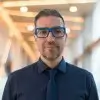





Trusted by 10,000+ Learners
Certified AI Security ProfessionalTM
Neutralize AI threats before attackers strike. Transform into an AI Security Pros who can detect LLM Top 10 vulnerabilities, block AI supply chain attacks, and implement MITRE ATLAS defenses that others miss. Organizations with Certified AI Security Professionals reduce AI vulnerabilities by 78%. Achieve the best AI security certification that puts you at the forefront of the AI security realm.

Trusted by top companies across industries, empowering thousands of professionals worldwide. Join the ranks of security leaders
Course Chapters
Course Prerequisites
- Course participants should have knowledge of running basic Linux commands like ls, cd, mkdir, etc.,
- Familiarity with any scripting language like Python, Golang, or ruby helps. However, it’s not a necessity.
Chapter 1: Introduction to AI Security
- Course Introduction (About the course, syllabus, and how to approach it)
- About Certification and how to approach it
- Course Lab Environment
- Lifetime course support (Mattermost)
- An overview of AI Security
- Basics of AI and ML
- What is AI?
- History and evolution of AI
- Key concepts in AI
- Types of AI
- Narrow AI vs. General AI
- Supervised Learning
- Unsupervised Learning
- Reinforcement Learning
- Natural Language Processing (NLP)
- Computer Vision
- Core Components of AI Systems
- Algorithms and Models
- Data
- Computing Power
- Introduction to Machine Learning
- What is Machine Learning?
- Differences between AI and ML
- Key ML concepts
- Retrieval Augmented Generation
- Basics of Deep Learning
- What is Deep Learning?
- Introduction to Neural Networks
- Brief overview of Convolutional Neural Networks (CNNs)
- Hands-On Exercise:
- Learn how to use our browser-based lab environment
- Setup Invoke Ai a creative visual AI tool
- Create a chatbot with Python and Machine learning
- Text classification with TensorFlow
- Implementing Duckling for converting Text into Structured Data
Chapter 2: Understanding and Attacking Large Language Models
- Introduction to Large Language Models
- Definition of Large Language Models
- How LLMs work
- Importance and impact of LLMs in AI
- Understanding LLM’s
- GPT (Generative Pre-trained Transformer)
- BERT (Bidirectional Encoder Representations from Transformers)
- Training and Augmenting LLMs
- Foundational model and fine tuned model
- Retrieval augmented generation
- Use Cases of LLMs
- Text Generation
- Text Understanding
- Conversational AI
- Attack Tactics and Techniques
- Mitre ATT&CK
- Mitre ATLAS matrix
- Reconnaissance tactic
- Resource development tactic
- Initial access tactic
- ML model access tactic
- Execution tactic
- Persistence tactic
- Privilege escalation tactic
- Defense evasion tactic
- Credential access tactic
- Discovery tactic
- Collection tactic
- ML attack staging
- Exfiltration tactic
- Impact tactic
- Real-World LLM attack tools on the internet
- XXXGPT
- WormGPT
- FraudGPT
- Hands-On Exercises:
- Scanning an LLM for agent based vulnerabilities
- Attacking AI Chat Bots
- Perform adversarial attacks using text attack
- Perform Webscraping using PyScrap
- Hide data in images using StegnoGAN
- Adversarial Robustness Toolbox
Chapter 3: LLM Top 10 Vulnerabilities
- Introduction to the OWASP Top 10 LLM attacks
- Prompt Injection
- System prompts versus user prompts
- Direct and Indirect prompt injection
- Prompt injection techniques
- Mitigating prompt injection
- Insecure Output Handling
- Consequences of insecure output handling
- Mitigating insecure output handling
- Training Data Poisoning
- LLM’s core learning approaches
- Mitigating training data poisoning
- Model Denial of Service
- DoS on networks, applications, and models
- Context windows and exhaustions
- Mitigating denial of service
- Supply Chain Vulnerabilities
- Components or Stages in an LLM
- Compromising LLM supply chain
- Mitigating supply chain vulnerabilities
- Sensitive Information Disclosure
- Exploring data leaks in various incidents
- Mitigating sensitive information disclosure
- Insecure Plugin Design
- Plugin/Connected software attack scenarios
- Mitigating insecure plugin design
- Excessive Agency
- Excessive permissions and autonomy
- Mitigating excessive agency
- Overreliance
- Understanding hallucinations
- Overreliance examples
- Mitigating overreliance
- Model Theft
- Stealing models
- Mitigating model theft
- Hands-On Exercises:
- Prompt Injection
- Training Data Poisoning
- Excessive agency attack
- Adversarial attacks using foolbox
- Overreliance attack
- Insecure plugins
- Insecure output handling attack
- Exploiting Data Leakage
- Permission Issues in LLM
Chapter 4: AI Attacks and Defenses Using DevOps
- Introduction to AI in DevOps
- Definition and Principles of DevOps and DevSecOps
- The Role of AI in Enhancing DevOps Practices
- Types of AI Attacks on DevOps Teams
- Model Creation and Deployment Process/Pipeline
- Attacks on Pipelines
- Cases of Attacks in DevOps and AI
- Hugging Face Artificial Intelligence (AI) Platform
- Notpetya Attack
- SAP AI Core Vulnerabilities
- DevSecOps Tooling and Defenses for AI Projects
- Software Composition Analysis for AI Projects
- Static Analysis of Models and Applications
- Dynamic Analysis of Models and Applications
- AI Firewalls for Guarding Models
- Hands-On Exercises:
- Poisoned pipeline attack
- Dependency confusion attacks
- Implementing SCA for AI projects
- Implementing model scans for AI projects
Chapter 5: Threat Modeling AI Systems
- What is Threat Modeling
- Why Threat Model?
- Threat Modeling Challenges
- Threat Modeling Benefits
- The Threat Model Parlance
- What are Assets?
- Weaknesses and Vulnerability
- Risk Management Stages
- STRIDE Methodology
- Diagramming for Threat Modeling
- Data Flow Diagram
- DFD Components
- An LLM Application Architecture
- Simple LLM Architecture
- DFD for an LLM Architecture
- STRIDE Threats for LLM Applications
- AI Threat Libraries
- STRIDE
- OWASP LLM Top 10
- Mitre ATLAS
- BIML Risk Framework
- AI Risk Repository
- AI Incident Database
- AI Threat Map
- Rating and Managing Risks
- Risk Management Meets Threat Modeling
- Risk Management Strategies
- Example Risk Rating Methodology
- Hands-On Exercises:
- Threat Modeling AI Systems
- Risk Rating
- AI Threat Modeling with IriusRisk
- Threat Modeling with StrideGPT
Chapter 6: Supply Chain Attacks in AI
- An overview of the Supply Chain Security
- Introduction to AI Supply Chain Attacks
- Data, model, and infrastructure based attacks
- Abusing GenerativeAI for package masquerading
- Vetting Software frameworks
- Creating a vetting process
- Automating vetting of third party code
- Scanning for vulnerabilities
- Mitigating dependency confusion
- Dependency pinning
- Supply chain frameworks
- SLSA
- Software Component Verification Standard (SCVS)
- Transparency and Integrity in AI Supply Chain
- Generate a Software Bill of Materials
- SBOMs, Provenance, and Attestations
- Model Cards and MLBOMs
- Model Signing
- Hands-On Exercises:
- Supply Chain Dependency Attack
- Backdoor attacks using BackdoorBox
- Model editing
- Generating SBOMs
- Attestations
- Model Signing
Chapter 7: Emerging Threats, Governance, and Compliance in AI
- Emerging Threats in AI
- Model-mediated supply chain attacks
- Self propagating AI model worms
- Backdoors in Fine-Tuning
- AI assisted evolving firmware
- Models without provenance
- AI Governance and Compliance
- Standards, Guidelines, Frameworks, Checklists for AI Security
- NIST RMF
- ISO/IEC 42001
- Other standards and guidelines
- AI Acts, Bills, and Legislations
- EU AI Act
- US Legislations
- Standards, Guidelines, Frameworks, Checklists for AI Security
Practical DevSecOps Certification Process
- After completing the course, you can schedule the CAISP exam on your preferred date.
- Process of achieving practical devsecops course certifications can be found on the exam and certification page.

What you’ll learn from the Certified
AI Security Professional Course?
Understanding and Attacking Large Language Models
- Learn how LLMs like GPT and BERT work
- Explore MITRE ATT&CK and ATLAS frameworks
- Execute adversarial attacks on AI chatbots
LLM Top 10 Vulnerabilities
- Identify OWASP Top 10 LLM vulnerabilities
- Recognize prompt injection and data poisoning
- Practice real-world LLM attack scenarios
AI Attacks and Defenses Using DevOps
- Analyze attacks on AI deployment pipelines
- Implement DevSecOps security tooling for AI
- Conduct poisoned pipeline attack exercises
Threat Modeling AI Systems
- Apply STRIDE methodology to model AI threats
- Leverage AI threat libraries and frameworks
- Perform risk rating with IriusRisk tools
Supply Chain Attacks in AI
- Discover AI supply chain attack methods
- Implement SLSA and SCVS security frameworks
- Generate SBOMs and model signatures
Emerging Threats, Governance, and Compliance in AI
- Defend against AI worms and backdoor threats
- Apply NIST RMF and ISO/IEC 42001 standards
- Learn the EU AI Act and US AI legislation
We have provided training and presented at numerous industry events.





Benefits of Enrolling in the Practical DevSecOps Courses
Master today’s security challenges with our updated curriculum and hands-on labs, preparing you for real-world threats.
Browser-based lab
Access all tools and exercise directly in your browser. Enjoy a practical, hassle-free learning experience - no downloads or installations needed!

Explore commands with our new AI-Powered 'Explain to me' feature
Gain detailed insights into any command with our AI-powered feature, designed to enhance your understanding and accelerate your learning.
Master cutting-edge tools
Enhance your security skills through hands-on experience with the latest industry tools in our labs. Get equipped for real-world applications and stay ahead of industry changes.

Hear from our learners
Explore the global impact of our Practical DevSecOps Certifications through our learners’ testimonials.
Frequently asked questions
What are the prerequisites required before enrolling in the Certified AI Security Professional Course?
You should have a basic knowledge of running Linux commands and also be familiar with any scripting language like Python, Golang, or Ruby. It will definitely be helpful.
What’s included in the AI Security Professional course package?
You will receive 3 years of access to the videos, 60 days of browser-based labs, a PDF manual, checklists, 30+ Guided Exercises, 24/7 student support through a dedicated Mattermost channel, and one exam attempt.
Do the Labs for the AI Security Professional Course Start Immediately after enrollment?
No, the course does not begin automatically upon enrollment. After purchasing, students will have the opportunity to select their preferred start date. Course access will be provided from the chosen start date.
Does the AI Security Professional Course come with CPE points?
Yes, the AI security Professional course gives you 36 CPE points after the completion of the course.
What is the Exam Format for the AI Security Course?
The exam is a task-oriented exam where you will have to solve 5 challenges in 6 hours and have an additional 24 hours to complete the report and submit it for evaluation. For more information, visit this link.
Should I go to an exam center, or is the exam online?
Yes, it is an online exam. You can take the exam from the comfort of your home or office.
How long is the AI Security certification valid?
The AI Security Professional Certification is a lifetime credential; therefore, there is no need to worry about renewals. Once you get it, it will be valid for the rest of your career.
What career advancement and salary benefits can I expect from completing the Certified AI Security Professional course?
Let me be straight with you—AI security is becoming as essential as knowing how to use email. Every company is rushing to adopt AI, but almost nobody knows how to secure it properly. That’s where CAISP comes in.
Currently, traditional cybersecurity engineers make $95,000–$130,000. But AI Security Engineers? They start at $152,773, and with CAISP certification, you’re looking at $175,689–$213,882. That’s a 15-40% bump just for having the right certification. Meanwhile, professionals without it stay stuck around $110,000–$120,000, usually in support roles watching others get promoted.
Here’s what makes this different: the AI security market is racing toward $234 billion by 2032, but there are barely any certified professionals to fill these roles. Companies are desperate. They’re implementing AI everywhere but have no idea how to protect it. When you walk in with CAISP certification, you’re not just another candidate—you’re the solution to their biggest nightmare.
Certified AI Security Professional isn’t just a piece of paper either. It’s comprehensive, hands-on training that actually teaches you to secure AI systems. Security engineers, red teamers, and AppSec professionals are all pivoting into AI security because they see what’s coming—this will be baseline knowledge for every security professional within five years.
Why Certified AI Security Professional course from Practical DevSecOps?
Practical DevSecOps delivers the industry-leading AI security certification built on real-world attack scenarios. The hands-on labs provide practical experience mitigating LLM vulnerabilities, preventing AI supply chain attacks, and implementing MITRE ATLAS defenses. Learn from industry veterans who’ve secured AI systems at Fortune 500 companies, mastering techniques deployable immediately.
You’ll learn to:
- Detect and neutralize adversarial attacks targeting LLMs, including prompt injection and model theft.
- Implement robust AI security controls using model signing, SBOMs, and dependency verification.
- Apply MITRE ATLAS framework and STRIDE-GPT methodologies to identify AI-specific vulnerabilities.
- Create effective incident response playbooks for AI system breaches and model compromise events.
Unmatched practical focus
70% hands-on labs for Mastering real-world scenario’s.
Expert-crafted curriculum
Get real-world insights from the experienced Security Experts.
Practical exam
Take a 6-hour examination to show what you have learned.
24/7 expert support













